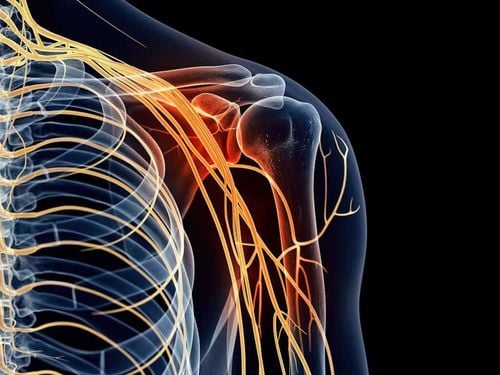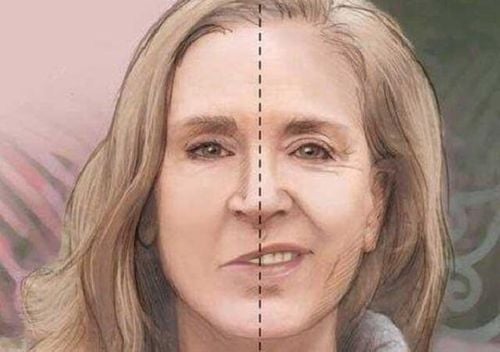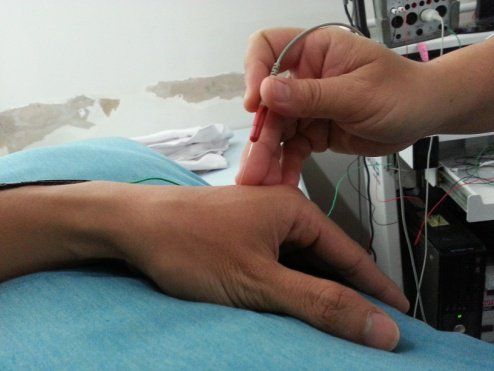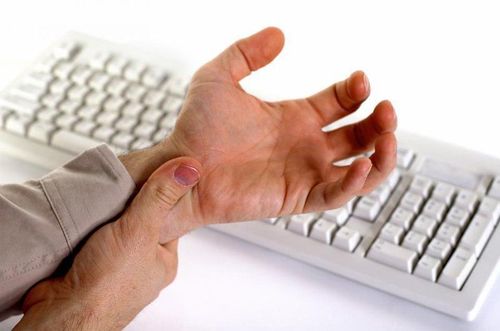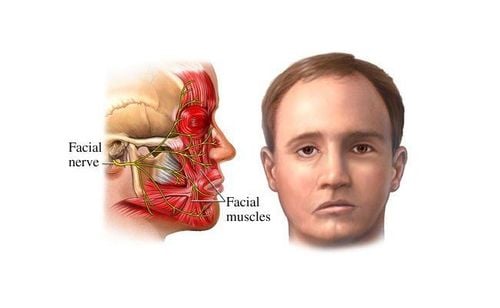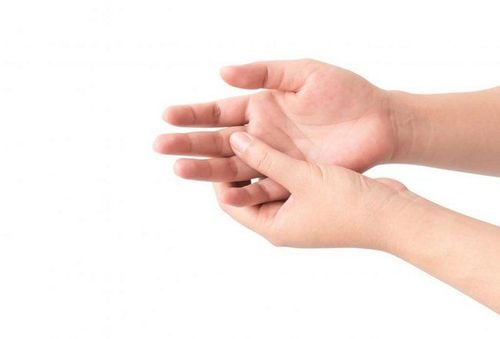This is an automatically translated article.
Article written by Rehabilitation Doctor - Department of General Surgery & Anesthesia - Vinmec Hai Phong International General Hospital.
Hemiplegia due to cold mainly occurs in winter and spring, regardless of age and sex. Diseases affecting health make life difficult. The rehabilitation of hemifacial paralysis takes a certain amount of time.
1. What is hemiparesis due to cold?
Hemiplegia due to cold (also known as peripheral facial paralysis, peripheral cranial nerve VII palsy, Bell palsy) is a condition of hemifacial paralysis accompanied by weakness or paralysis of the facial muscles. sudden acute, which can cause one side of your mouth to droop, when you smile, your mouth is tilted to one side, you may have difficulty keeping saliva on that side of your mouth and your eyes on that side difficult or cannot be closed. This condition is different from central facial paralysis which is damage to the brain.
Peripheral facial paralysis is the most common cause of facial nerve palsy. Peripheral facial paralysis accounts for approximately 49% to 51% of all facial paralysis cases, with an estimated incidence of 13 to 34 cases per 100,000 persons per year. This condition can occur at any age, regardless of sex, and is not transmitted from person to person.
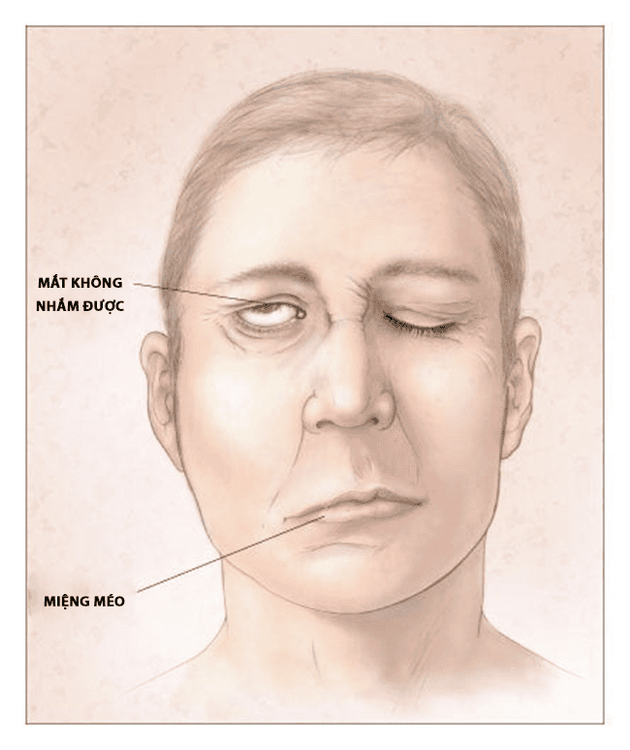
Tình trạng liệt nửa mặt có thể xảy ra với mọi lứa tuổi
2. Causes of hemiplegia due to cold
Exact cause is still unknown. There are many theories put forward regarding the etiology of this condition, including:
Viral infection, vascular dysfunction, autonomic dysregulation. Swelling and inflammation of the nerve that controls the muscles on one side of your face from an upper respiratory infection, such as the flu or a cold. Besides, there are also factors that increase the risk of disease such as: The patient is pregnant (especially in the last three months of pregnancy or in the first week after giving birth); people with diabetes, cancer or taking immunosuppressive drugs... Symptoms of peripheral facial paralysis usually begin to improve within a few weeks, and fully recover in about 6 months. A small number of patients continue to have some symptoms of peripheral facial paralysis for life.
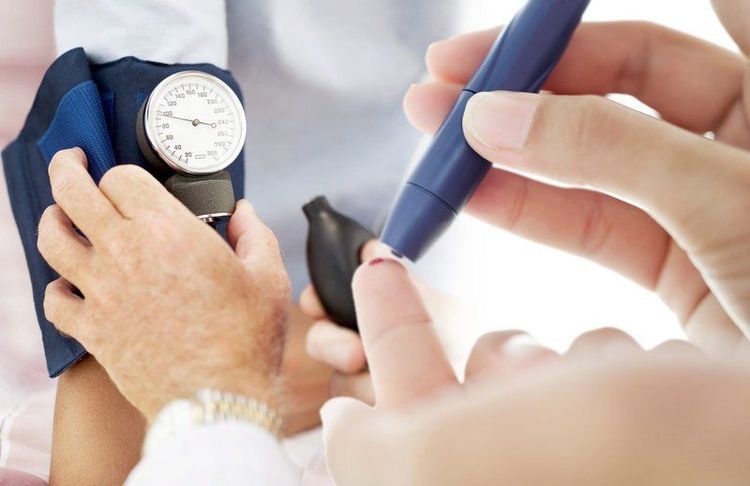
Bệnh nhân tiểu đường tăng nguy cơ mắc liệt nửa mặt ngoại biên
3. Signs of peripheral hemifacial paralysis
Signs and symptoms come on suddenly and may include:
Rapid onset of mild weakness to total paralysis on one side of the face - occurring over a few hours to a few days Face drooping and difficult to show on face, such as eyes closed or smiling Drooling on the affected side of the face Pain around the jaw or in or behind your ear on the affected side Increased sensitivity to sound on the affected side Headache Loss taste Changes the amount of tears and saliva you produce. In rare cases, peripheral facial palsy can affect the nerves on both sides of your face and cause complications including:
Irreversible damage to the nerve your face. Abnormal growth of nerve fibers. This can lead to involuntary contraction of some muscles when you are trying to move another (For example, when you smile, the affected eye may close). Partial or complete blindness in which the eye cannot close due to excessive dryness and scratching of the eye's transparent protective layer (cornea).

Đau đầu là một triệu chứng báo hiệu tình trạng liệt nửa mặt ngoại biên
4. Treatment of peripheral hemifacial paralysis
There is no single treatment that works for all patients with peripheral facial paralysis, but your doctor may recommend medication or physical therapy to help speed your recovery.
4.1 Medical treatment
Medications commonly used to treat peripheral facial paralysis include:
Corticosteroids such as prednisone are powerful anti-inflammatory agents that help reduce swelling of the facial nerve. Corticosteroids may work best if they are started at a high dose (1mg prednisolone/kg) and within a few days of your symptoms starting. Antiviral drugs: The role of antiviral drugs remains undecided. Antiviral drugs alone showed no benefit over placebo. Antiviral drugs added to steroids may be beneficial for some people with peripheral facial paralysis, but this has yet to be proven. Even so, valacyclovir (Valtrex) or acyclovir (Zovirax) is sometimes given in combination with prednisone in people with severe peripheral facial paralysis.

Thuốc Corticosteroid được sử dụng để điều trị bệnh liệt mặt ngoại biên
4.2 Physiotherapy treatment- Rehabilitation
Paralyzed muscles can contract and shorten, causing permanent spasticity. A physical therapist- Rehabilitation can teach you how to massage and move your facial muscles to help prevent this from happening.
4.2.1 Principles of treatment and rehabilitation
Treatment as soon as possible will help the patient recover faster, should be treated immediately after detecting the disease. At the same time, avoid strong stimuli, do not try to cure paralysis in the acute phase of the disease, combined with the protection of the eye on the paralyzed side.
4.2.2 Rehabilitation methods and techniques
Rehabilitation acute phase (3 days - 1 week)
Encourage, explain to help patients feel secure and cooperate in treatment Use warm heat, gentle massage movements to avoid strong stimulation, reduce laugh... Use a Y-shaped tape to fix the forehead - upper and lower lips to lift the facial muscles from sagging. Patients should wear sunglasses, eye drops with physiological saline, use a temporary eye mask to avoid dust and foreign objects causing eye damage. Guidelines for oral hygiene.
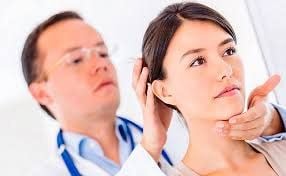
Các phương pháp và kỹ thuật phục hồi chức năng
Use heat, pulse electricity, electrolysis. Massage the face area by using five fingers and a relaxed palm to rub, gently massage the entire paralyzed side in a clockwise direction from top to bottom, inside to outside and vice versa. Exercise the facial muscles through exercises from active support to resistance. Instruct the patient to practice by themselves through the mirror: close their eyes, whistle, blow fire, close their mouth, smile, wrinkle their forehead, pronounce words with lip sounds: B, P, U, I, A... keep your face warm, protect your eyes, avoid strong eye movements.
4.3 Surgical treatment
Facial nerve decompression surgery is rarely an option for cold peripheral facial paralysis. In the past, decompression surgery was used to relieve pressure on the facial nerve by opening up the segment of bone through which the nerve passes. Today, surgical decompression is not recommended. Damage to the facial nerve and permanent hearing loss are possible risks of this surgery.
To prevent peripheral facial paralysis due to cold, you should pay attention to avoid sudden cold wind, do not lie in the direction of the air conditioner door, in cold season need to open the door slowly, avoid drafts; When going out, you should wear a mask to keep your face warm, do not let young children sit or stand in front of the car.
In summary, peripheral facial paralysis due to cold is usually benign, but the patient needs to keep his face warm, protect his eyes, and avoid strong eye movements. At the same time, the patient also needs to be periodically examined until the symptoms are gone to evaluate the treatment results, adjust the treatment method if necessary, and to detect early complications of facial paralysis.

Để phòng ngừa liệt nửa mặt do lạnh bạn cần chú ý giữ ấm cơ thể
Vinmec International General Hospital is one of the hospitals that not only ensures professional quality with a team of leading medical doctors, modern equipment and technology, but also stands out for its examination and consultation services. comprehensive and professional medical consultation and treatment; civilized, polite, safe and sterile medical examination and treatment space. Customers who choose to be treated at the hospital will be oriented to safely and effectively treat cold-induced facial paralysis, you can contact the hospital's neurology department to be prescribed specific treatment by doctors. for each case.
Please dial HOTLINE for more information or register for an appointment HERE. Download MyVinmec app to make appointments faster and to manage your bookings easily.
SEE MORE
Is VII nerve palsy (facial paralysis) dangerous? Can 7th nerve palsy be cured? Dealing with sudden facial paralysis, mouth distortion




